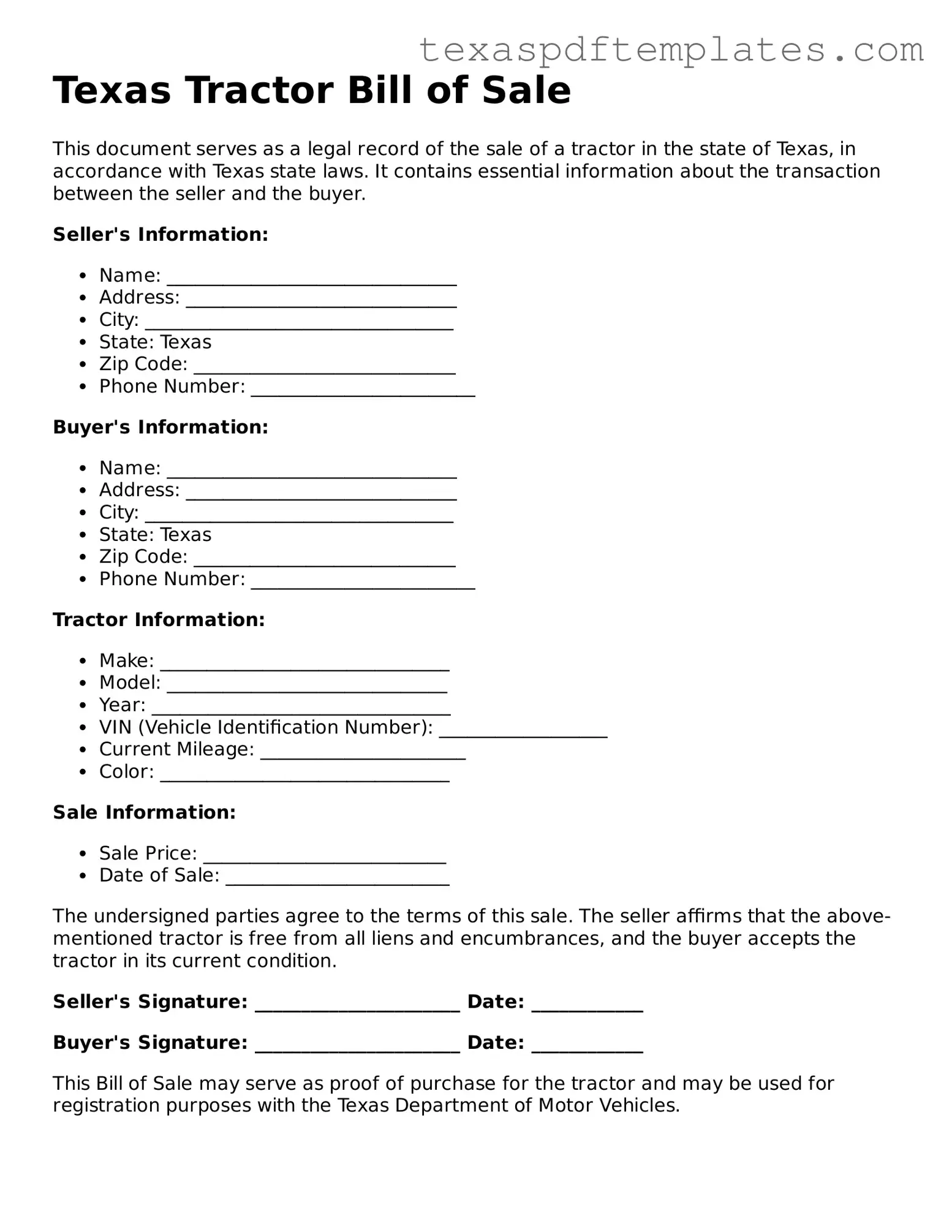Texas Tractor Bill of Sale
This document serves as a legal record of the sale of a tractor in the state of Texas, in accordance with Texas state laws. It contains essential information about the transaction between the seller and the buyer.
Seller's Information:
- Name: _______________________________
- Address: _____________________________
- City: _________________________________
- State: Texas
- Zip Code: ____________________________
- Phone Number: ________________________
Buyer's Information:
- Name: _______________________________
- Address: _____________________________
- City: _________________________________
- State: Texas
- Zip Code: ____________________________
- Phone Number: ________________________
Tractor Information:
- Make: _______________________________
- Model: ______________________________
- Year: ________________________________
- VIN (Vehicle Identification Number): __________________
- Current Mileage: ______________________
- Color: _______________________________
Sale Information:
- Sale Price: __________________________
- Date of Sale: ________________________
The undersigned parties agree to the terms of this sale. The seller affirms that the above-mentioned tractor is free from all liens and encumbrances, and the buyer accepts the tractor in its current condition.
Seller's Signature: ______________________ Date: ____________
Buyer's Signature: ______________________ Date: ____________
This Bill of Sale may serve as proof of purchase for the tractor and may be used for registration purposes with the Texas Department of Motor Vehicles.
